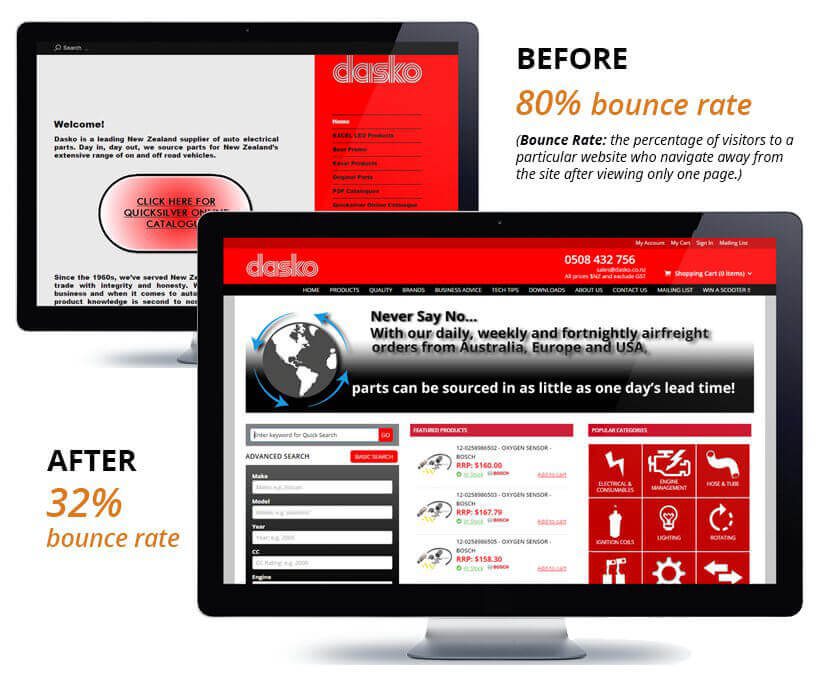How Can We Measure the Success of a Website?
One of the important measures we take into account when assessing our website’s effectiveness to convert visitors into customers, is the bounce rate.
While there is plenty of other data that helps measure website quality, such as page views and average visit duration on the site per visitor, bounce rate is a useful metric that indicates the quality of a website’s first impression on its target audience.
Bounce rate is measured as the percentage of single page visits, meaning the viewer has only looked at one page and has then exited. If a user has done this, it suggests that they have come to your website but do not believe it is appropriate for what they are looking for. There are a number of potential reasons for this, key ones being:
- The site had search terms indexed in Google that didn’t reflect accurately the website’s offerings
- The website itself did not draw the visitor to explore its content
- The website communicated poorly what they are offering.
When a Website Becomes Outdated, It Becomes Ineffective
The majority of our clients have approached us with an existing website that is not performing as it should, either the design or navigation is no longer effective, the content has become stale, or the platform being used does not optimise well with search engines.
In the case of Dasko, a supplier of auto electrical parts, the website was not leading to sales. The two primary reasons for this were:
- The site did not offer ecommerce functionality, meaning you could not buy directly online but instead had to email or call to place an order. By 2015, this no longer was acceptable practice, as it was then easier for users to order the parts from competitors who allowed easier online purchasing.
- Secondly, the website lacked a home page that allowed users to instantly recognise that they were on the appropriate website
How to Recognise an Ineffective Website
Dasko realised that their website was not user friendly by looking at the numbers. With a bounce rate of 80%, users were coming to the Dasko website and failing to either recognize what the website was for or believing that the website could not satisfy their needs.
Their website didn’t just need new content, it needed a complete re-design to ensure that users were fully engaged with the website and ultimately bought their products.
The Potential of Website Redevelopment
Comparing the two, you can see that not only is the newer website more aesthetically appealing, the new website allows users to see exactly what Dasko offer. The redevelopment of the website has led to a dramatic decrease in bounce rate, where it was once 80% it is now only 32%.
Business owners cannot expect a website that does not clearly communicate what their business does to be effective in today’s online world. Don’t wait, your website isn’t going to magically become user friendly, redeveloping it to ensure that users stay on your website is the only way forward.
